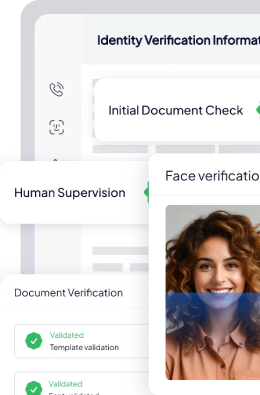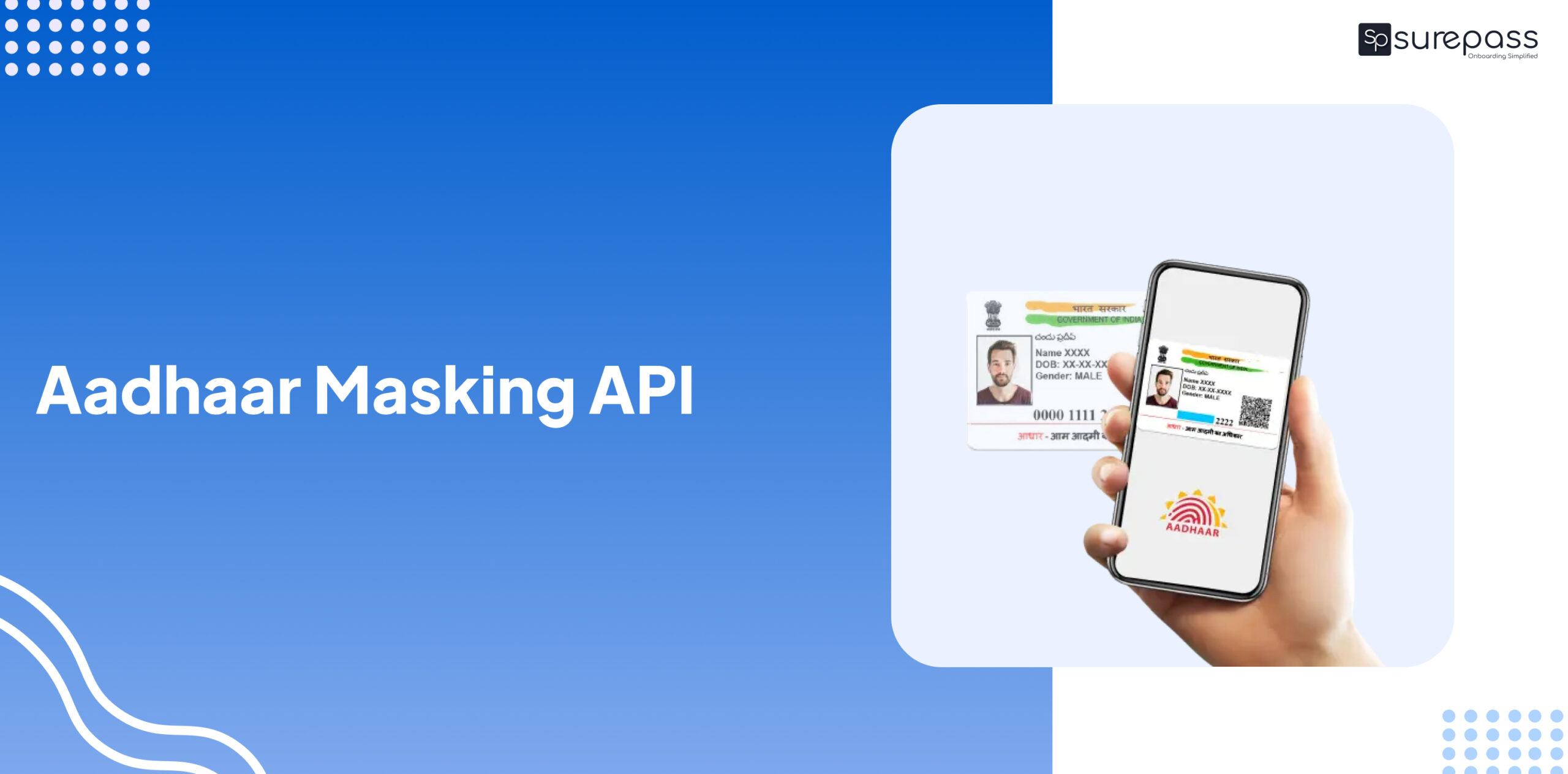Introduction
Aadhaar Masking API is very important for every financial institution or the entities that need to store the Aadhaar of an individual in physical or digital form as proof of identity. Aadhaar is being used for authentication by various official and financial institutions in India. The UIDAI does not support storing the Aadhaar number of an individual as proof of identity as only the masked version must be kept for reference.
Since the Aadhaar card is a must-needed form of identity and most of institutes use it to verify their users, it is important to have an Aadhaar Masking API as it is mandated by UIDAI, RBI, IRDAI & SEBI.
Aadhaar verification API helps you to meet the requirements to store the Aadhaar card as a picture according to the guidelines given by the Unique Identification Authority of India (UIDAI) by masking it.
What is the Aadhaar Masking API?
It is an easy-to-integrate API that helps in fast Aadhaar masking. So, when your client or customer uploads the document on your system or platform Aadhaar Masking API helps you to hide the first Eight Digits of the Aadhaar number submitted by them in real-time.
Aadhaar masking API helps organizations and institutions (who are authorized to collect the document for KYC) to easily mask the aadhaar number present on the card submitted by their customer or client in real-time.
The customer or the user may simply upload the picture of the Aadhaar card on your platform whose KYC is needed to be done.
The Aadhaar Masking API collects the picture submitted by the customer or user and replaces the 8 characters from the Aadhaar number with some characters like “ XXXX-XXXX”
While only 4 characters remain visible.
So this is what Aadhaar Masking API is and how it works. The API is very easy to integrate and ready to go for use.
The API is designed and developed, especially for:
- Banks
The main objective to do KYC in private banks is to prevent them from being used by fraudsters for money laundering activities. - Insurance company
The KYC process helps insurance companies smoothen and expedite the entire process of buying an insurance policy by doing the KYC of their customers. - NBFCs ( Non-banking financial companies)
The NBFC is allowed and permitted to use the Aadhaar card as the document to perform an Aadhaar-based bank-mandated KYC. - Mutual Fund / Investment Advisor / Wealth Management and many more
Aadhaar Masking API can help to easily upload and mask the document according to the guidelines given by UIDAI to store the document in their system and authenticate their customers in real time.
Automate your KYC Process & reduce Fraud!
We have helped 200+ companies in reducing their user onboarding TAT by 95%
Simple things we must know and understand about the Rules and Regulations
- When do we need aadhaar masking?
The Government of India has made the masking of Aadhaar numbers mandatory while storing them in all your databases. As per the regulations for Aadhaar authentication services, you will have to mask (black out) the Aadhaar number either at the point of capture or before storing them permanently in your downstream systems and databases. - Do we have to mask the Aadhaar number in a Video also?
There have been a lot of discussions recently on whether or not the Aadhaar number has to be masked in videos. So here’s the answer:
Yes you must redact the Aadhaar Number from the Aadhaar card shown in the video If you are using services such as Video KYC or IPV/OSV/PIVC to onboard and verify customers - Is storing Aadhaar Card legal?
No, In accordance with current regulations, you cannot store the complete Aadhaar number in your downstream systems and databases. If you have the Aadhaar Vault system, it is possible to store the full Aadhaar number in your vault and use a surrogate number. - Should we mask historical Aadhaar images?
Yes, The government has mandated that every Aadhaar Card captured thus far must be masked. - Are there technologies available that can mask Aadhaar numbers?
YES, Technology has finally advanced to the point where we can accurately mask Aadhaar numbers. The new Aadhaar Masking API allows you to recognize the 12-digit Aadhaar numbers and seamlessly mask Aadhaar numbers in images and videos.
You can refer to the guidelines below for Aadhaar masking.
- UIDAI-
Dated 23 October 2018: Ordinance Aadhaar Amendment: F.No.13012/171/2018/Legal/UIDAI/114 - RBI-
Master Direction – Know Your Customer (KYC) Direction, 2016 (Updated 29 May 2019): RBI/DBR/2015-16/18, Master Direction DBR.AML.BC.No.81/14.01.001/2015-16 and Amendment to Master Direction (MD) on KYC: RBI/2018-19/190, DBR.AML.BC.No.39/14.01.001/2018-19 - IRDAI-
Dated 29 January 2019: Allowing Aadhaar Card acceptable as documents for KYC- following certain conditions: Ref: IRDAI/SDD/Cl R/MISC/020/01/2019 - SEBI-
Dated 24 April 2020: Clarification on KYC Process and Use of Technology for KYC: Ref: SEBI/HO/MIRSD/DOP/CIR/P/202
Summary:
- Aadhaar Masking API is very important for every financial institution or the entities that need to store the Aadhaar of an individual in physical or digital form as proof of identity.
- Aadhaar is being used for authentication by various official and financial institutions in India like BANKS, NBFC, Insurance Companies, and many more.
- The Government bodies UIDAI, RBI, IRDAI & SEBI have made the masking of Aadhaar numbers mandatory while storing them in all your databases.
- In accordance with current regulations, you cannot store the complete Aadhaar number in your downstream systems.
- It is important to have an Aadhaar Masking API as it helps organizations and institutions to collect and mask the aadhaar number in real-time.
- The Aadhaar Masking API is fully digital and easy to integrate which helps in fast Aadhaar masking.
- The Aadhaar Masking API is fully digital and easy to integrate which helps in fast Aadhaar masking.





